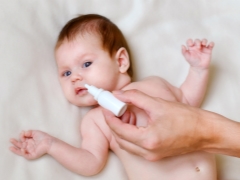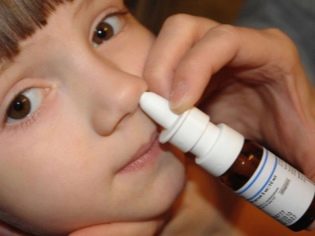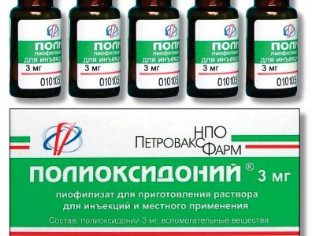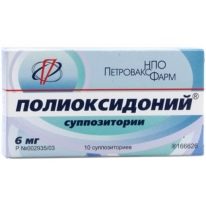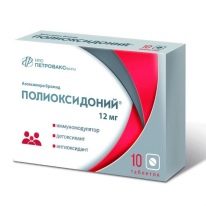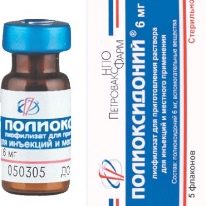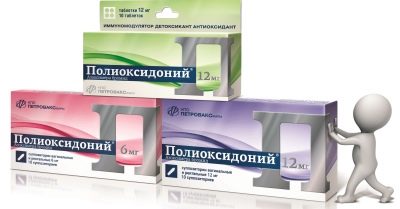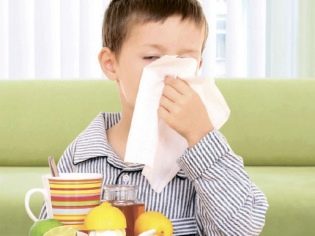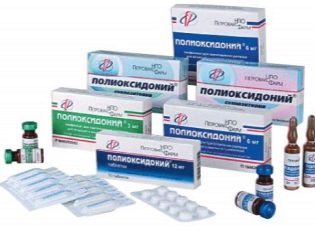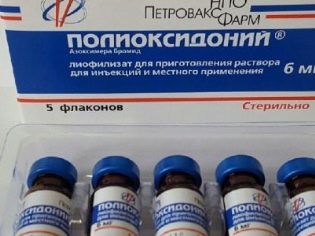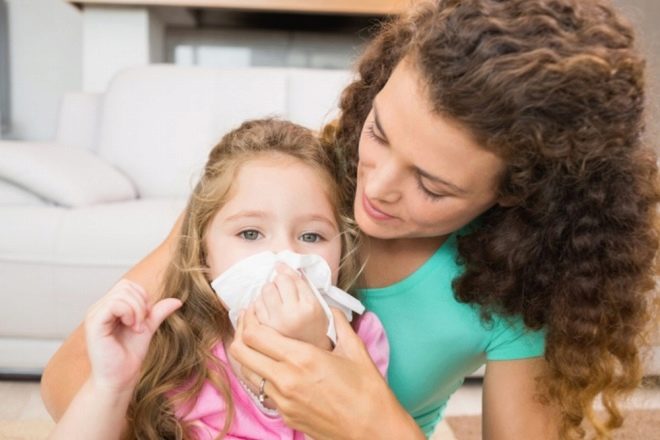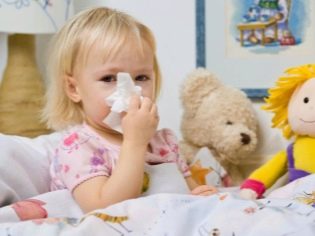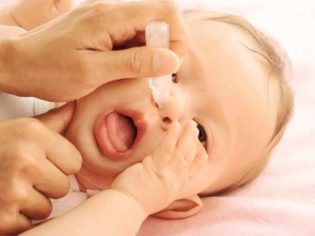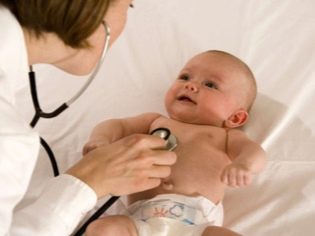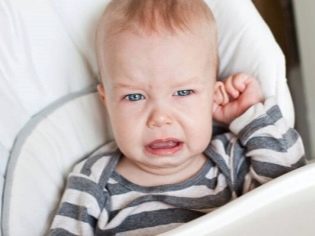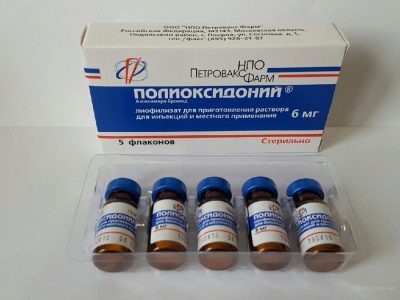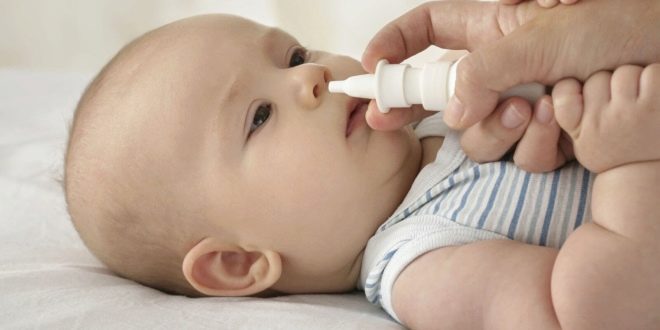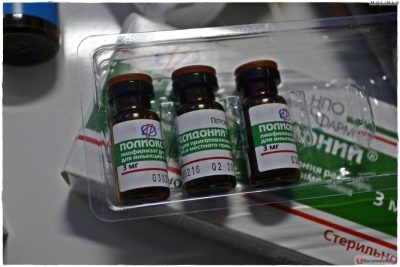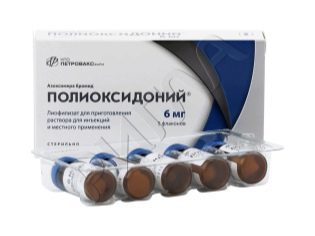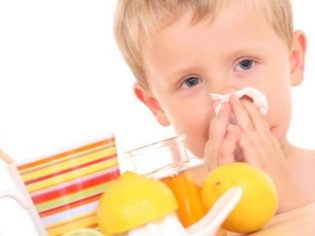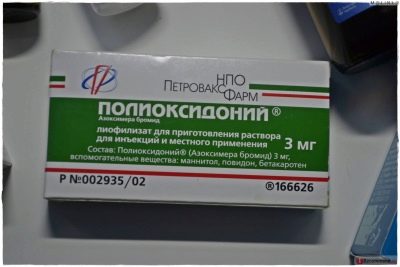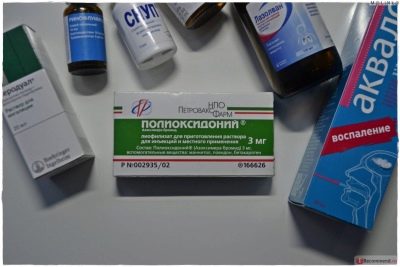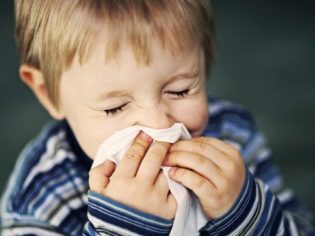Polyoxidonium nose drops for children
Polyoxidonium is one of the drugs-immunomodulators and comes in several forms. Do such medication drip into the nose when prescribed to children and in what dosage is used?
Release form
Polyoxidonium is presented in pharmacies in three forms:
- suppositories;
- tablets;
- ampoules with lyophilisate.
The latter form is used as nose drops, which looks like a white-yellow porous mass placed in glass bottles with rubber stoppers and aluminum caps. Such Polyoxidonium Available in boxes of 5 or 50 bottles and diluted with water or other liquid before intranasal use.. It is dripped not only in the nose, but also under the tongue.
Composition
The active component of the lyophilisate, as in other forms of Polyoxidonium, is represented by a high polymer substance called “azoxymere bromide”. Inside one bottle it is contained in the amount of 3 mg or 6 mg.
In addition to it, there are two auxiliary ingredients in the medicine - Povidone K17 and Mannitol.
Operating principle
The main effect of polyoxidonium on the child's body is the stimulation of the immune system (this effect is called immunomodulatory). It is due to the ability of azoxymere bromide to influence the activity of cells of the immune system, as well as the synthesis of interferons of various types and antibodies.
In addition, when it enters the nose, the drug additionally stimulates the early defense response of the immune system, activating local immunity.
Even in the medication note detoxification, antioxidant and anti-inflammatory properties.
Indications
Polyoxidonium drops are included in the treatment complex for:
- acute inflammatory processes in the area of the nasopharynx and respiratory tract, caused by a viral, bacterial or fungal infection;
- acute allergic reactionwhich the infection has joined;
- exacerbations of chronic infectious diseasesfor example, adenoiditis, sinusitis or rhinitis.
Independently Polyoxidonium in drops is used for the prevention of influenza and other acute respiratory infections caused by viruses.
Besides, medicine can be dripped to prevent infectious complications in the postoperative period (after interventions in the field of ENT organs).
From what age is appointed?
The use of the lyophilisate in the form of nose drops is allowed from the age of six months.
Contraindications
The drug is not used in children with hypersensitivity to any of its components, as well as in acute renal failure. If the child has a chronic pathology of the kidneys, the drug is used with caution.
Side effects
In some children, after instilling polyoxidonium into the nose, an allergic reaction may develop. In rare cases, the drug provokes a rise in body temperature or restless behavior. If such symptoms appear in the baby, you should immediately inform the doctorwho prescribed the drops.
Instructions for use
To make a dry lyophilisate drops in the nose, you can add to the vial:
- boiled water, which is cooled to room temperature;
- saline;
- distilled water.
If you use a medicine containing azoxymere bromide at a dose of 3 mg, then 1 ml of solvent is needed, and 2 ml of liquid is added to a bottle with 6 mg of the drug.As a result of this dilution, 20 and 40 drops, each containing 0.15 mg of azoxymere, are obtained, respectively.
The daily dose of the drug is determined by the body weight of the small patient. A child should receive 1 drop (0.15 mg of the active ingredient) per 1 kilogram per day.
For example, if a baby weighs 21 kg, then the daily dosage for it will be 21 drops. Since it is necessary to instill a means in the nose three times a day with pauses from 1 to 2 hours, then a single dose will be 7 drops.
The maximum dosage of the drug per day - 40 drops. The duration of use of Polyoxidonium drops depends on the purpose of the appointment. Most often, the drug drip course 10 days, but with the prevention of SARS, the application may be longer (up to a month).
Overdose
Cases where an excess dose of Polyoxidonium adversely affected the health of children were not previously noted. If, after accidentally exceeding the dosage, the child felt unwell, he should immediately be shown to the doctor.
Interaction with other drugs
In the annotation to the lyophilisate, it is noted that such a drug can be combined with various other drugs, including antibacterial and antiviral drugs.
Terms of sale
Unlike Polyoxidonium in candles and tablets, which are referred to as over-the-counter drugs, a prescription from a doctor is required to purchase a lyophilisate. The average cost of 5 bottles with a dosage of 3 mg is 700-800 rubles.
Storage features
Sealed vials of lyophilized should be stored until the end of its shelf life (it is 2 years) in the refrigerator, since the recommended temperature regime for this form of Polyoxidonium is 2 to 8 degrees Celsius. After dilution with water or another liquid, the drops can be stored for up to 48 hours at room temperature..
Reviews
The use of nose drops in children speak mostly positively. The drug is praised for safety for children, ease of dosing and effectiveness, and among the disadvantages are often called its high price.
Analogs
Some other medication that has a similar effect, for example, may become a replacement for Polyoxidonium, for example:
- Derinat. Such nasal drops based on sodium deoxyribonucleinate can be used at any age. They are used for the treatment of acute respiratory viral infections, and prophylactic purposes, because the drug activates cellular and humoral immunity, as well as accelerates healing.
- IRS-19. This nasal spray contains lysates of several types of bacteria, due to which the drug stimulates local immunity. It is prescribed to children older than 3 months for pharyngitis, rhinitis, tonsillitis and other diseases.
- Grippferon. This remedy is represented by nasal drops and spray, contains interferon and can be used for the prevention and treatment of influenza in children from birth.
Dr. Komarovsky tells in detail about the rhinitis of children and the cures for it.
